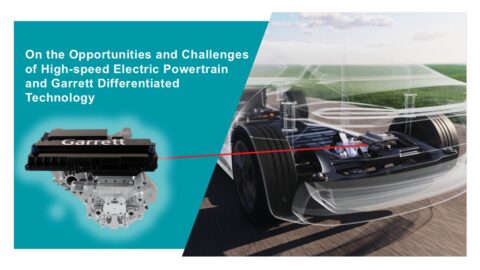Abstract: Up to now, the demand for high specific power and torque was the main driver for boosting the engine. Over the years, it also led to significant fuel benefits within emission cycle measurements.
On the other hand high boosted engines come with well-known drawbacks, which are still the main driver for turbocharger development today:
• Slower transient performance compared to naturally aspirated
• Necessity of fuel enrichment to protect the turbocharger’s components for higher engine speeds.
These two points need to be addressed by an evolution of boosting systems combined with a Miller cycle for a high efficiency combustion process. The presented paper shows the effects of Miller valve timings on the engine performance and figures out the synergies with a VNT turbine. Garrett (Honeywell Transportation Systems) presents a VNT turbine optimized for gasoline engines and the capability for exhaust temperatures up to 950° C. This optimized design overcomes several well-known failure modes leading to a gasoline VNT for mass production. Within this paper 1D engine process simulations are carried out for a 1.5 l 3-cylinder gasoline engine. The high Miller rate even at full load enable to increase the compression ratio.
High Miller ratios require an increase in boost pressure which can provided by the latest Garrett compressors design for these applications. The reduced engine backpressure caused by the VNT turbine in combination with the higher achievable Miller ratio lead to a reduced fuel consumption at rated power of 11 %. One of the challenges for Miller application is the transient engine response which is typically worse compared to conventional boosted engines and therefore not acceptable for the customer. Here the VNT turbine shows a reduced Time-To-Torque at 1500 rpm of 48 % compared to a wastegate turbine with otherwise unchanged boundary conditions.
Summarizing, the combination of a VNT turbine which provides high turbine power and a Miller engine concept which requires high boost pressures is a good concept to reduce the fuel consumption for future gasoline engines.
Keywords: Miller, VNT, VTG, engine matching, gasoline engine
















